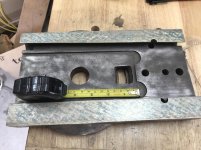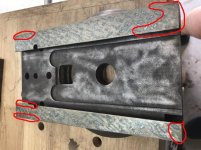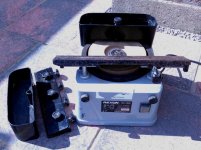bmarsh
Plastic
- Joined
- Jan 19, 2010
- Location
- San Antonio, TX
Posting again in the right section.
Can I get some advice/pointers on what you consider the progress of this scraping? How do you assess the point count at this stage? I know I have a little ways to go to pick up spotting in a few areas. At what point should I transition from rough scraping to semi-finish finish scraping? I did 2 semi-finish passes before I took the photos just to see. I'm restoring a Monarch 12CK lathe (personal hobby use) it is 1000% better in the current condition than it was. Input appreciated as this is my first scraping project.


Can I get some advice/pointers on what you consider the progress of this scraping? How do you assess the point count at this stage? I know I have a little ways to go to pick up spotting in a few areas. At what point should I transition from rough scraping to semi-finish finish scraping? I did 2 semi-finish passes before I took the photos just to see. I'm restoring a Monarch 12CK lathe (personal hobby use) it is 1000% better in the current condition than it was. Input appreciated as this is my first scraping project.







 but .. could be.
but .. could be.